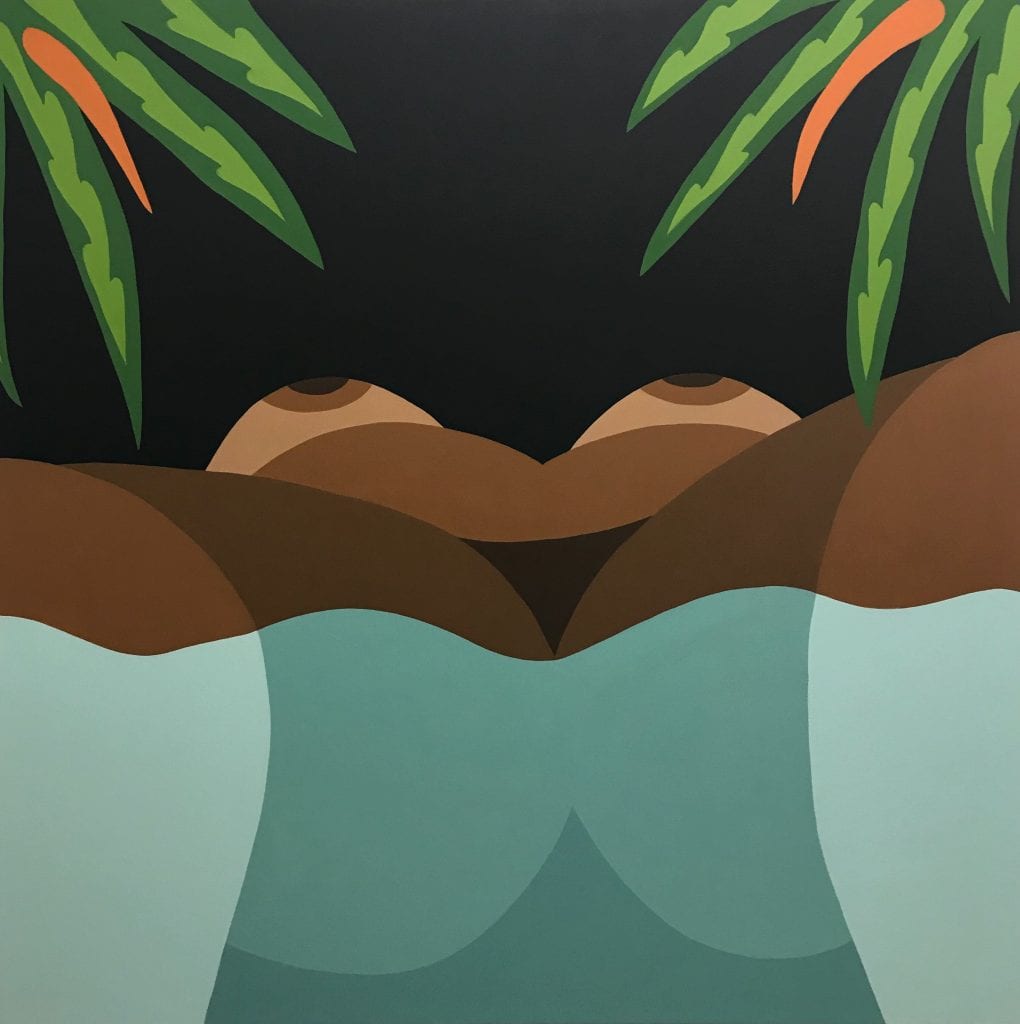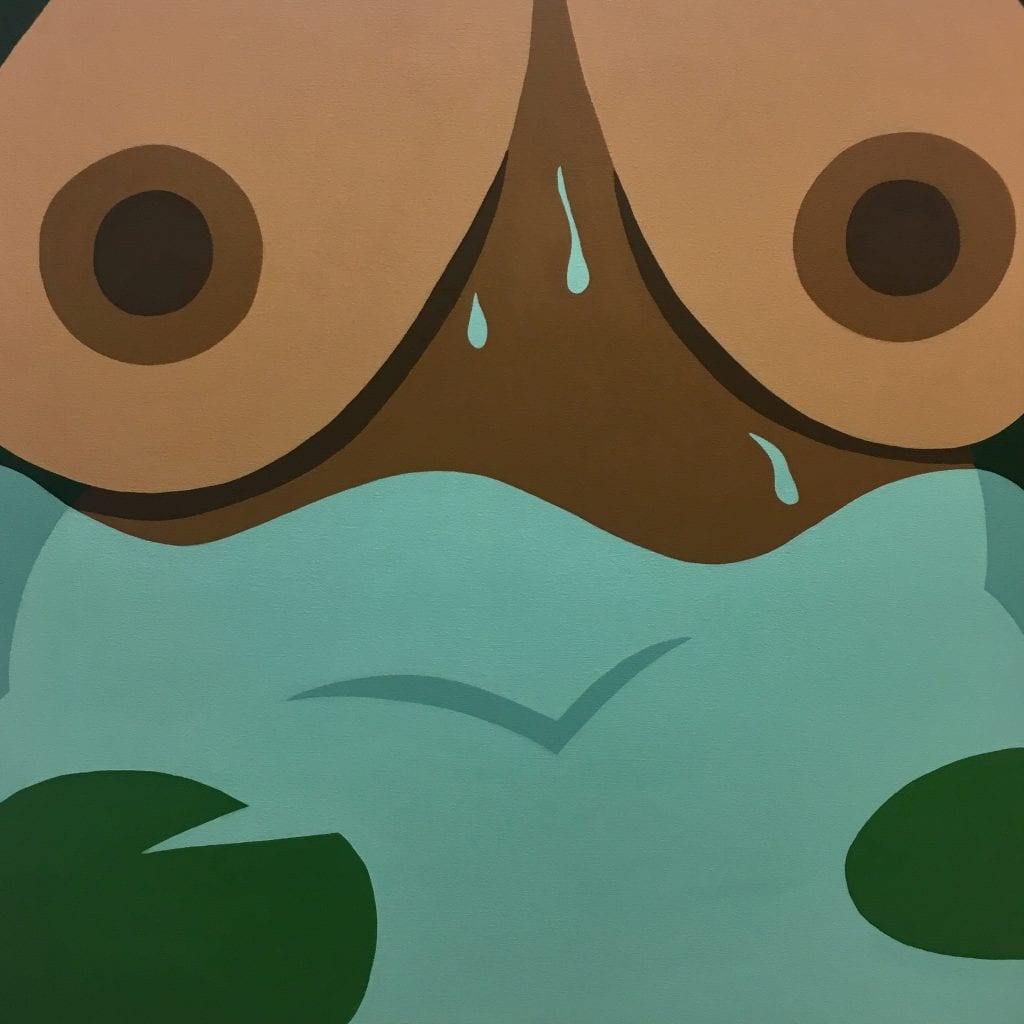Bianca Nemelc paints female bodies to create a conversation around identity. Using her own diverse and multi-cultural upbringing as a jumping off point, Nemelc’s canvases depict bold representations of womanly figures, unapologetically taking up space. Though simple in form, her works contain a multitude of stories of female histories as well as contemporary issues. Nemelc’s work is currently on view in a solo exhibition with Ross+Kramer Gallery in East Hampton entitled Small Comforts. She is based in New York, NY.
Tell us about yourself. Where are you from originally and when did art enter into your life?
I was born and raised in the Washington Heights neighborhood of NYC. My father is Surinamese and Indonesian and my mother is Dominican. I was raised to embrace culture in my house, so art was always alive in many forms: music, food, painting. My Oma (grandma) always had beautiful paintings around the house and her brother was a painter in Holland so our apartment always had his work on the walls or in our closets. I don’t think it entered at any specific point – since art and culture co-exist, it’s always been there throughout normal everyday life. But those everyday things played a big role as I got older in my own soul searching and helped for art to become focal point in my career trajectory.
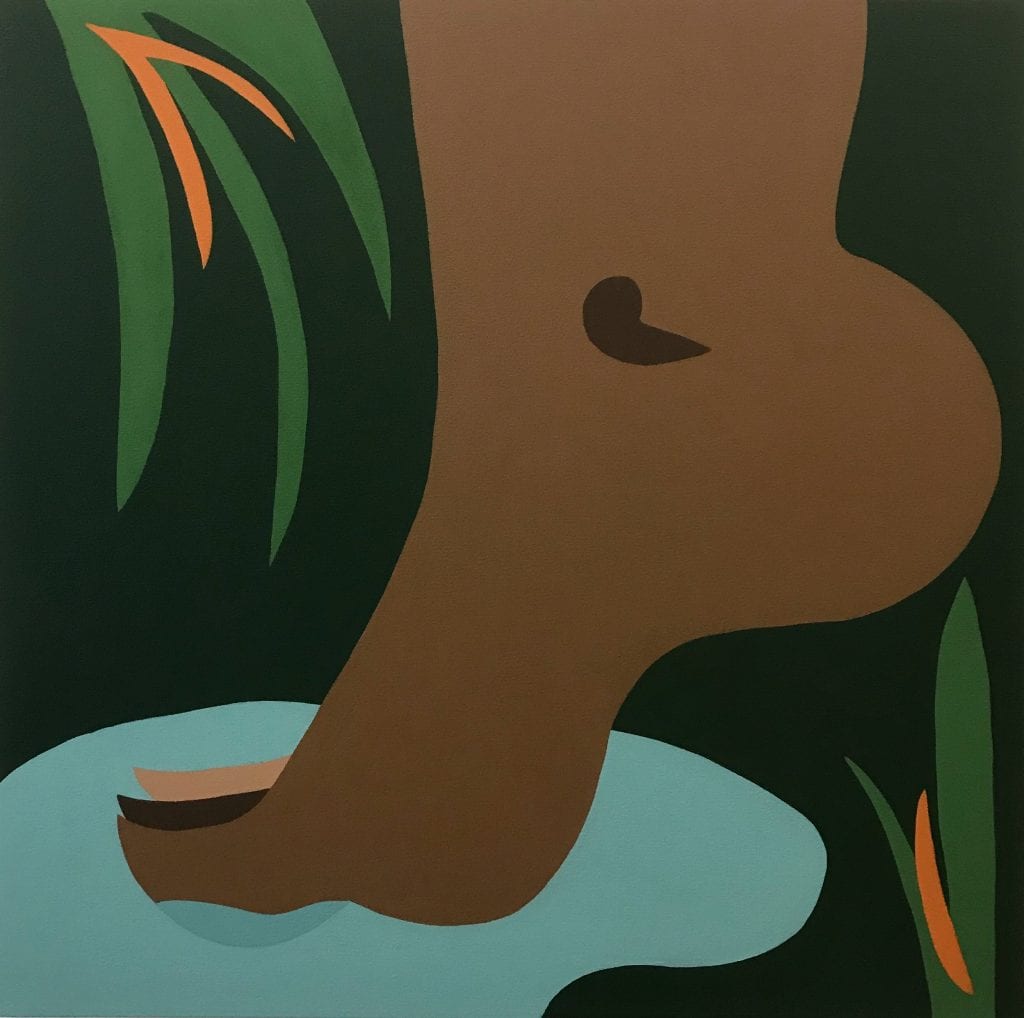
It wasn’t until recently that your painting practice became a big part of your life. Can you tell us about your transition into pursuing your work on a professional level?
I can’t say there was ever a purposeful moment where I said: “This is it.” For a long time, drawing and sketching was my go-to because it felt safe, I could close up my book and go about my day without anyone ever knowing. But that safety gets boring, there’s no growth there. So painting these big naked women became my language for dealing with putting myself out there in the most vulnerable way. For me it was like finding a seed in my pocket, not knowing what it is and not having read a single gardening book before planting it. Next thing I know, I have a tree. Right now, I’m just tending to my tree and learning about it and learning about me in the process. Deciding to pursue my work on a professional level was pretty much like that, and I find that so beautiful and scary at the same time. I just know I have stories to tell and ideas to explore, so that’s what I’m here to do.
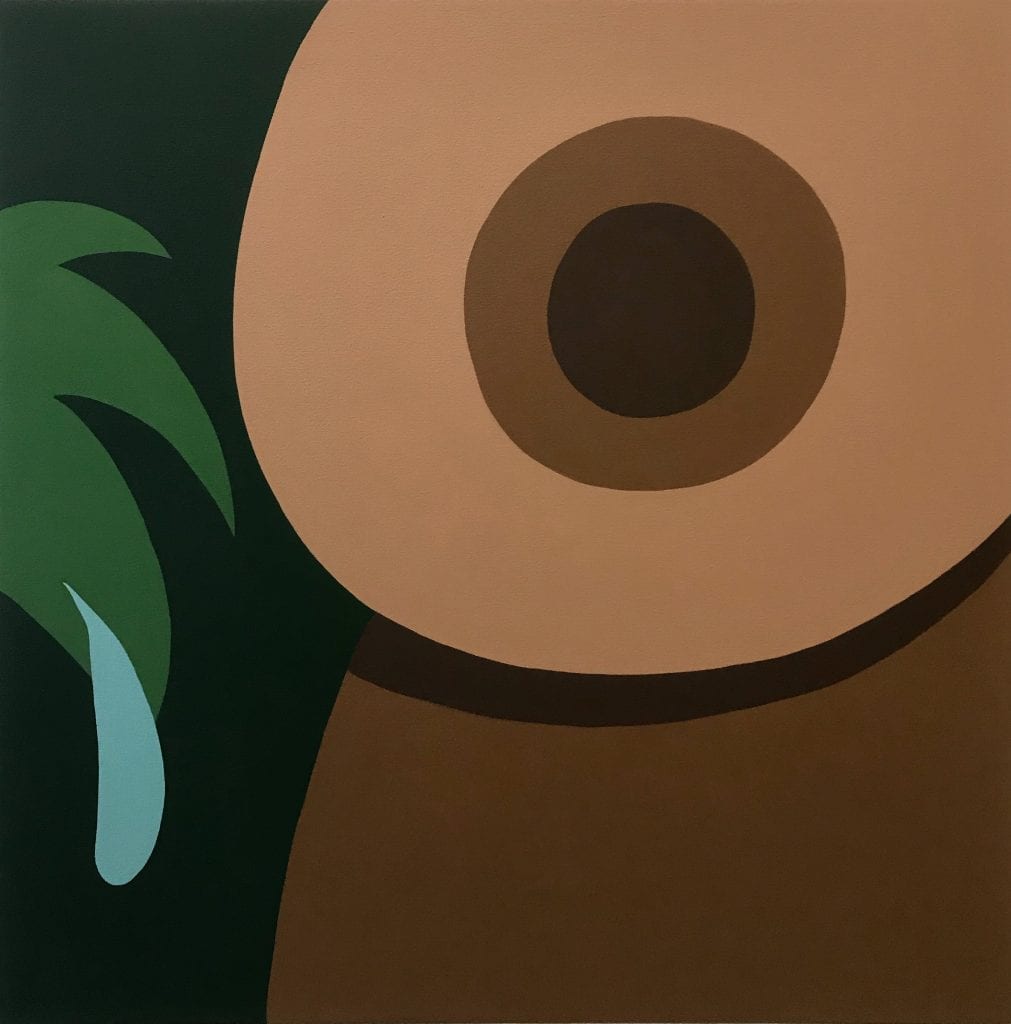
How do you choose what colors find their way onto your canvas?
I just look in the mirror. Brown is always going to be the star color in my work, and I try to use as many shades as I can in a painting. All other colors are chosen through the emotions I’m trying to convey. The new series of work I’ve just finished is very dark, because the paintings are very introspective, and I want to make the viewer feel like they are not meant to be looking at these intimate moments on the canvas. Sometimes though, my brighter paintings are more welcoming and celebratory. The colors all depend on where my women are and how they are feeling in their world.

Your works show female bodies but never include the woman’s face. Why is that?
I don’t think that her facial identity is central to the stories I’m trying to tell. I’m very interested is embracing the body as the main identity of the women I paint. They connect with their physical form in the same way you would connect with the face you see in the mirror. I want these women to unapologetically take up space, wherever they are with their physical form. But if you absolutely need to know what she looks like, put your own face on her and now she is you if thats what you want. Now you are on my canvas.
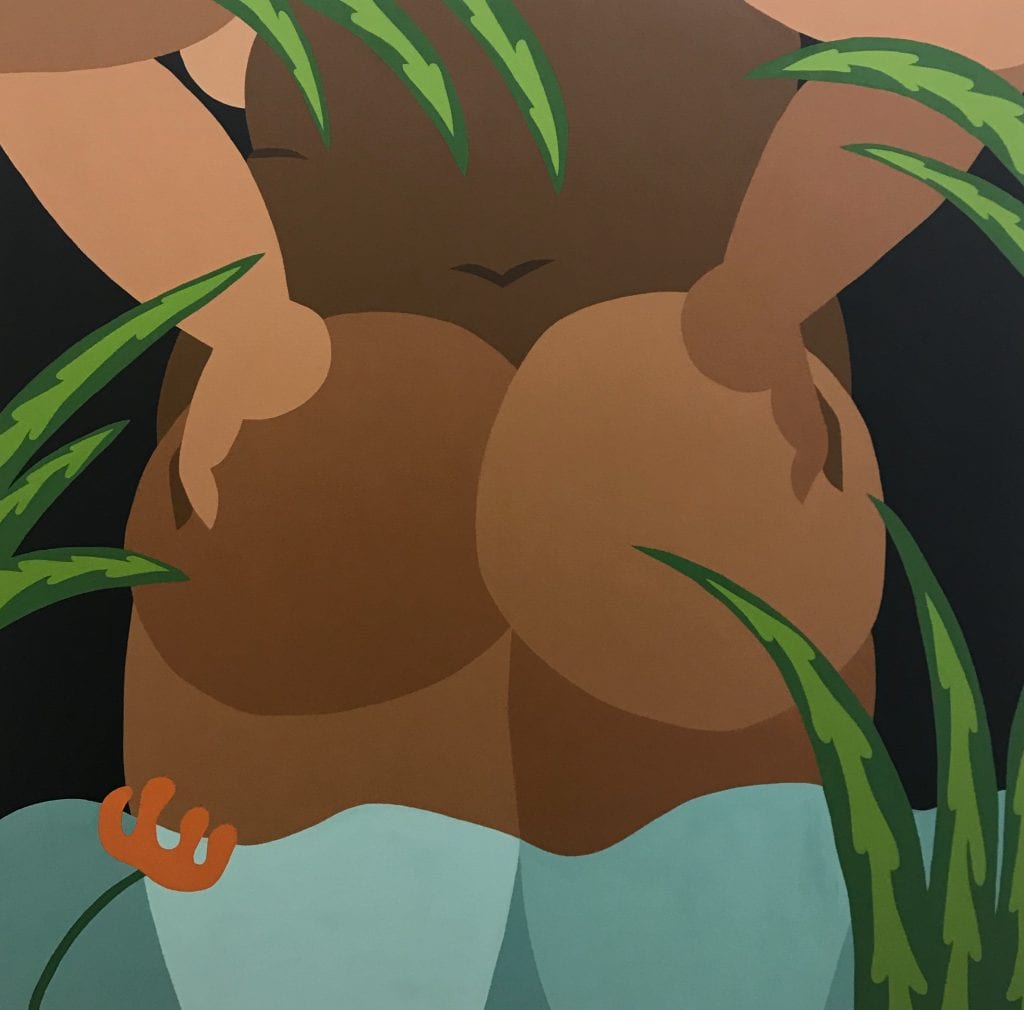
Who are the women you depict?
Whoever I want them to be. Of course, they carry pieces of me within their stories. But, they are figuring themselves out in their own way too. I think that we all have a story of finding ourselves, finding a home within the many layers of our complex identities. The women in these paintings were born out of my own need to visually make sense of owning ME but I see the focus of my canvases taking on their own life and encompassing many women, many stories, many journeys.
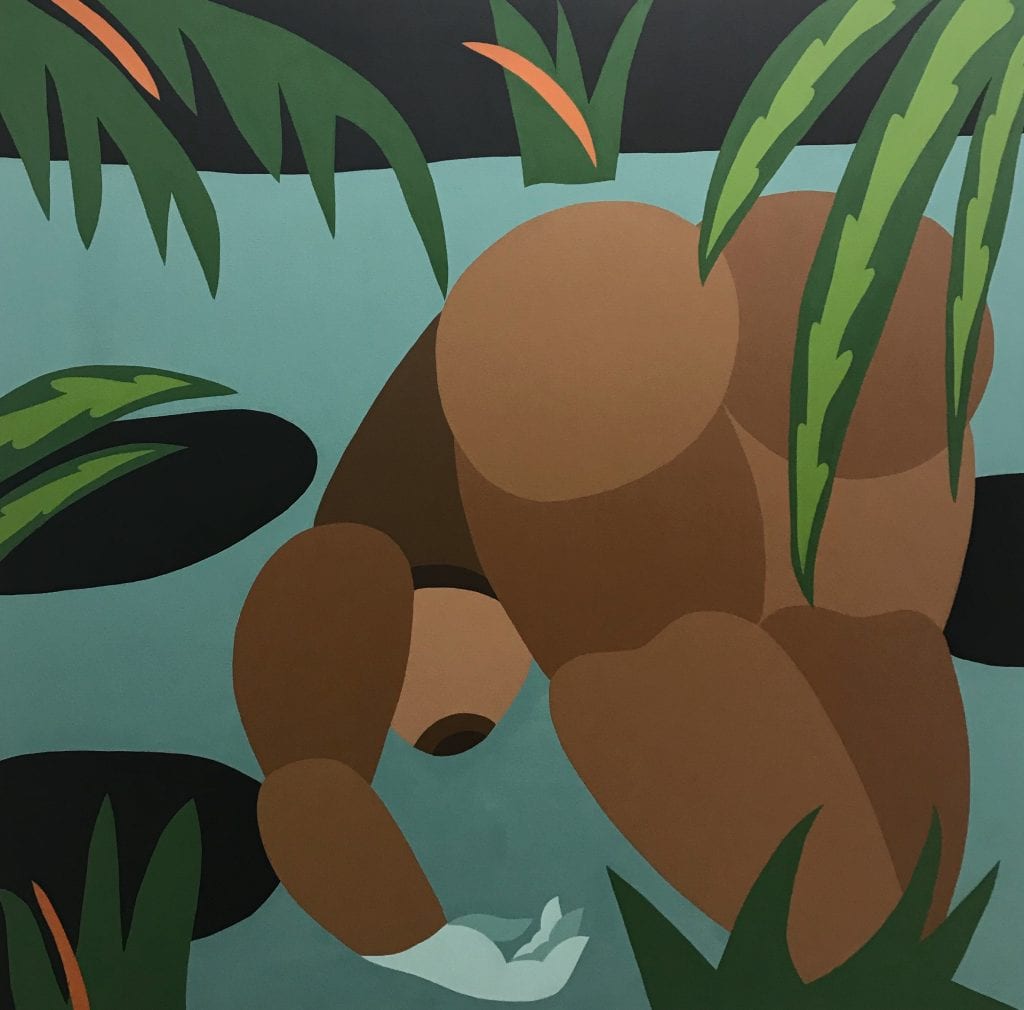
At SPRING/BREAK this past Spring, your work took on an installation, where your paintings extending off of the walls and into a complete 360 experience. How does installation help you to further express what you are trying to convey in your work?
The SPRING/BREAK show really gave me the opportunity so be less subjective of the story I want to tell and allowed me to hone in on the emotional territory I want to drive home. In that installation particularly, I wanted you to step into their world, their kitchen, and feel like you were home. There were the sounds of an uptown kitchen with boiling water and an ice cream truck driving by, kids playing outside. Then you had this surreal and animated puddle of water in the middle of the floor that connected to you to the paintings that reminded you that you were in their world. I am interested in creating safe spaces for my women to exist in and do their own thing. Installation helps me convey to the viewer that this isn’t necessarily for them but for the women in the paintings, viewers are just there to experience this world with them.
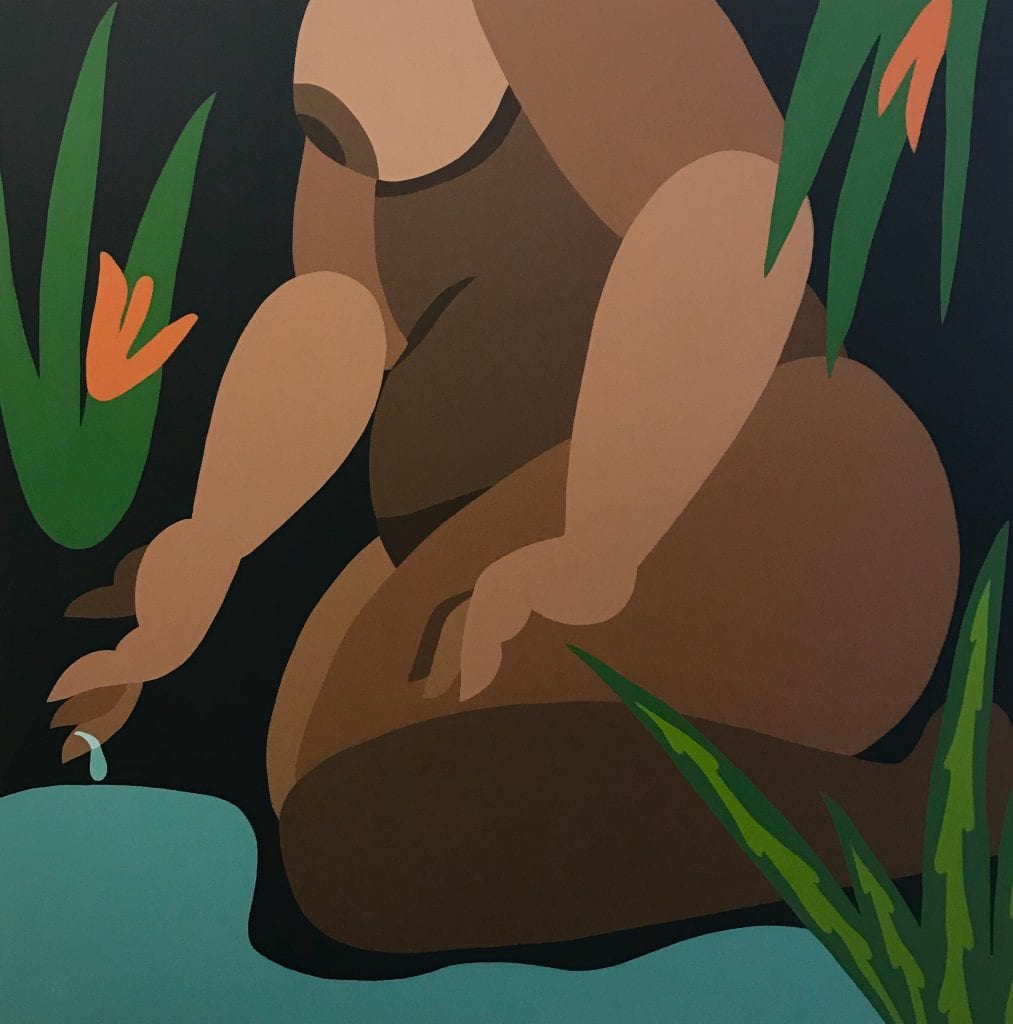
What’s next for you?
I have a show opening with Ross+Kramer Gallery in East Hampton, Saturday August 17th with a new body of work and I’ll be showing in LA in February with Lowell Ryan Projects!
I am also very interested in environmental advocacy and water preservation which is why those elements are so prevalent in my work. So, I am interested in finding new ways to tell purposeful stories that intertwine the world I’ve created on canvas, with the world we now have in real life.
